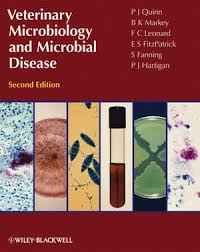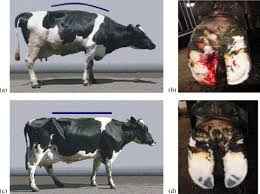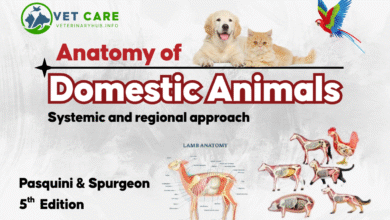Veterinary Microbiology & Microbial Disease

Veterinary Microbiology & Microbial Disease is a comprehensive textbook covering the biology of microorganisms that cause diseases in animals. It explores bacterial, viral, fungal, and parasitic infections, along with diagnostic techniques, pathogenesis, and disease control. Ideal for veterinary students and professionals. PDF Free download
Free download here:
Veterinary Microbiology & Microbial Disease is a widely respected and authoritative textbook that offers an in-depth look into the complex field of veterinary microbiology. Designed primarily for veterinary students, researchers, and professionals, this book provides a solid foundation in the understanding of microorganisms—such as bacteria, viruses, fungi, and parasites—that are responsible for diseases in animals. With its structured approach and updated scientific information, the book serves as both a learning resource and a reference guide in veterinary medicine, microbiology, and pathology.
The book begins by introducing the fundamental principles of microbiology. It details the structure, function, and classification of microorganisms, offering a clear explanation of microbial physiology, genetics, and the interaction between microbes and their animal hosts. This foundational knowledge is critical for readers to grasp the more advanced concepts presented in the later chapters, including pathogenesis, immunity, diagnosis, and treatment.
A major strength of this book is its comprehensive coverage of infectious diseases affecting domestic animals. It is systematically organized into sections that address bacterial, viral, fungal, and parasitic diseases, as well as prion-related disorders. Each disease is discussed in terms of its causative agent, clinical signs, epidemiology, diagnostic methods, prevention strategies, and available treatments. This makes it easier for veterinary students and practitioners to quickly find the information they need, whether for academic study or clinical reference.
In the section on bacterial diseases, the book explores a wide range of important pathogens such as Escherichia coli, Salmonella, Clostridium, and Mycobacterium species. It explains their mechanisms of infection, how they evade the immune system, and the resulting pathological changes in the host animal. The text also highlights the growing concern of antibiotic resistance and discusses alternative approaches to managing bacterial infections, including vaccines and biosecurity measures.
The viral diseases section is equally robust, covering key veterinary viruses such as those causing foot-and-mouth disease, rabies, feline leukemia, and avian influenza. The book not only describes the viruses themselves but also the molecular mechanisms of infection, replication, and transmission. This section is particularly valuable for understanding emerging viral threats and zoonotic diseases—those transmissible between animals and humans.
Fungal infections, though less common, are also detailed in the book. It describes conditions like ringworm, aspergillosis, and cryptococcosis, emphasizing their clinical relevance, diagnostic features, and management strategies. Parasitic diseases are another critical area, with coverage of protozoa and helminths that cause significant health and economic losses in livestock and companion animals. Diseases like coccidiosis, toxoplasmosis, and heartworm are discussed thoroughly.
The book also incorporates discussions on prions—infectious proteins that cause fatal neurodegenerative diseases such as BSE (mad cow disease). Although prion diseases are rare, they are of high significance due to their public health implications and regulatory impact on the animal food industry.
A unique and valuable feature of Veterinary Microbiology & Microbial Disease is its integration of diagnostic and laboratory techniques throughout the chapters. It explains how to isolate and identify various pathogens using modern tools such as PCR, ELISA, and next-generation sequencing. This practical approach helps students and practitioners link theoretical knowledge with real-world applications in clinical and research settings.
Additionally, the book discusses host-pathogen interactions and the immune responses of animals to infections. Understanding immunity is crucial for the development of vaccines and disease prevention strategies. The role of environmental factors, stress, nutrition, and genetics in disease susceptibility is also addressed, reflecting the multifactorial nature of many animal diseases.
Another highlight of the book is its attention to the One Health approach, which recognizes the interconnectedness of animal, human, and environmental health. By including information on zoonoses and public health aspects, the book equips veterinary professionals with the knowledge to contribute effectively to global health initiatives.
With its clear language, informative illustrations, and logical structure, Veterinary Microbiology & Microbial Disease stands out as a must-have resource for anyone involved in animal health sciences. The updated editions often include the latest research findings, case studies, and developments in microbial disease control and diagnostics.
Whether you’re a student preparing for exams, a veterinarian looking for a quick reference, or a researcher exploring infectious diseases in animals, this textbook offers reliable, up-to-date information in a concise and organized format.


